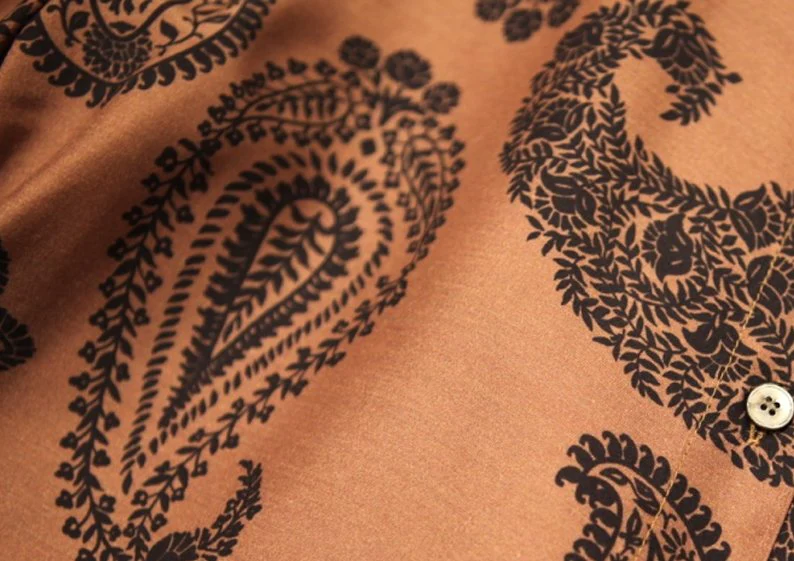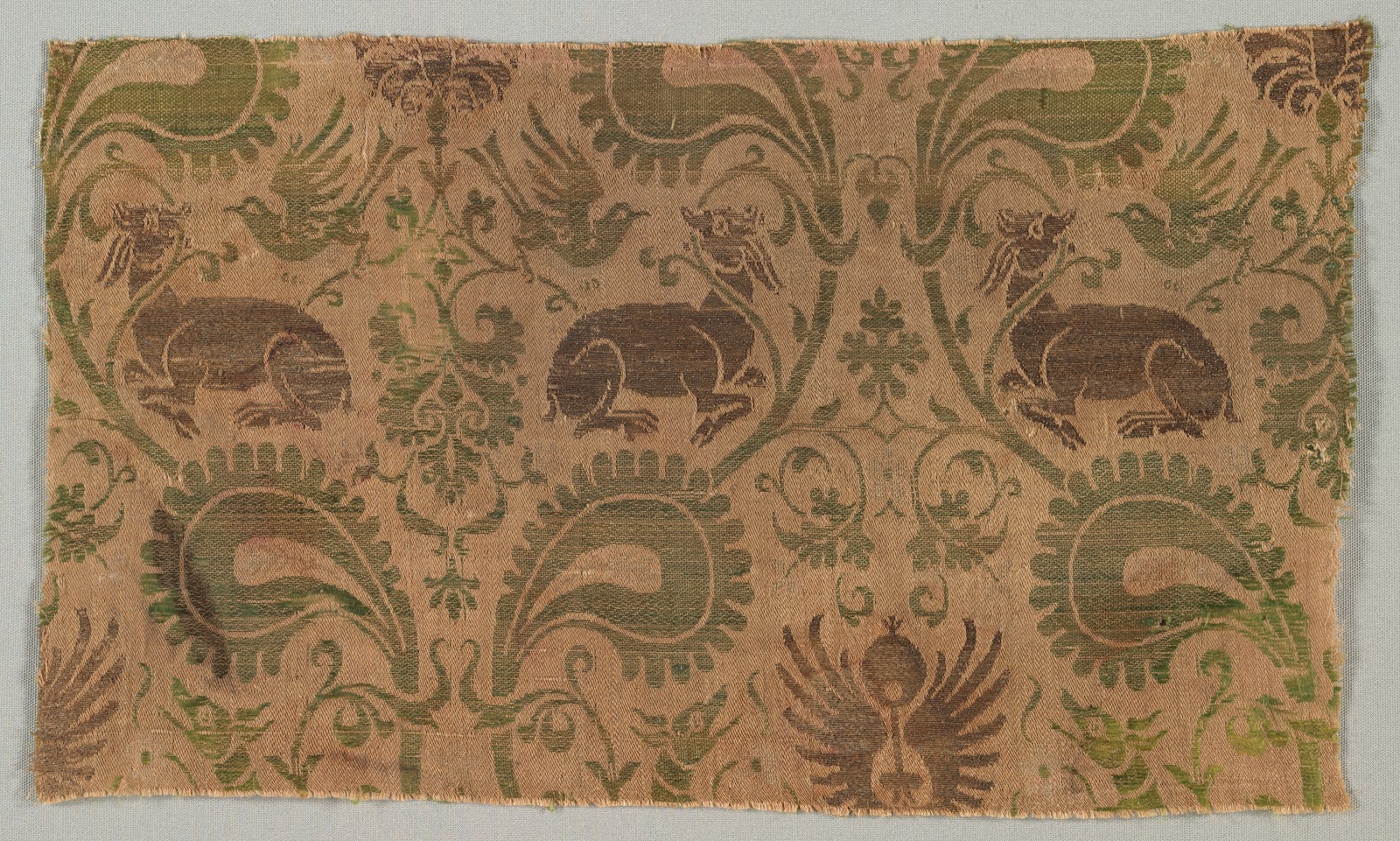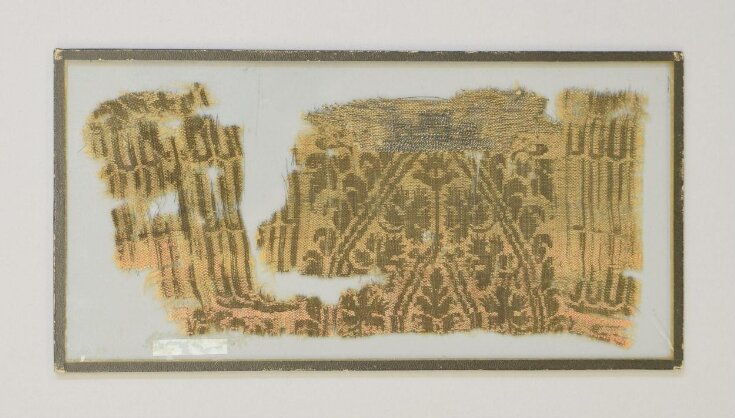 |
| Taken from Toast Magazine |
I personally had been told the "no paisley in the medieval and Renaissance period" so many times, I figured it must be true. Afterall, the closest thing I found for a while was this 17th century portrait which is just outside of the SCA period:
 |
| Taken from Tate |
Paisley, in the SCA period, means the Scottish town which is just outside of Glasgow. I've been to it and through it a few times. It's a lovely manufacturing town which, as many sources suggest, is where the design paisley got it's name from when the weavers in the town Paisley started to turn out the design in the 18th century.
Before that? I'm not sure if there is an English name for it. However, the design itself did exist in Europe well within the SCA period. Here is the evidence:
 |
| Taken from the Cleveland Museum |
The above is a piece of silk lampas, manufactured in the second half of the 14th century...in Italy. Those big green things below the heraldic dogs certainly look like paisleys to me! To show it's not a one off, look above the back of the bird's head in this next 14th century piece.
 |
| Taken from the V&A Museum |
It's also a fun one since it was made in Iran - where we know they did have paisley designs in the 14th and 15th centuries- but used in 14th century Germany for a dalmatic. This also seems to be the more popular form of the paisley design as it shows up, again, in 14th Century Italy.
 |
| Taken from the V&A Museum |
The more modernly common paisley shows up again in Italy in the 16th century.
 |
| Taken from the MET |
As well as in 16th century Spain!
 |
| Taken from the V&A |
Really, it looks like the paisley was fairly popular in 14th C Europe, though it is a part of other designs. Hopefully, this will be helpful for anyone else trying to document the paisley into the later medieval period and up into the Renaissance era. Now, I can safely say that even the design elements on my sari turned 1490's gown are period correct. :-)
Edit to add: I wanted to add this image as well:
While the Turkish lady is from the 17th century, her hat clearly has paisleys. This, again, pushes that whole "18th century" idea back. Plus, the painting may be as early as the 1610's.


0 comments:
Post a Comment